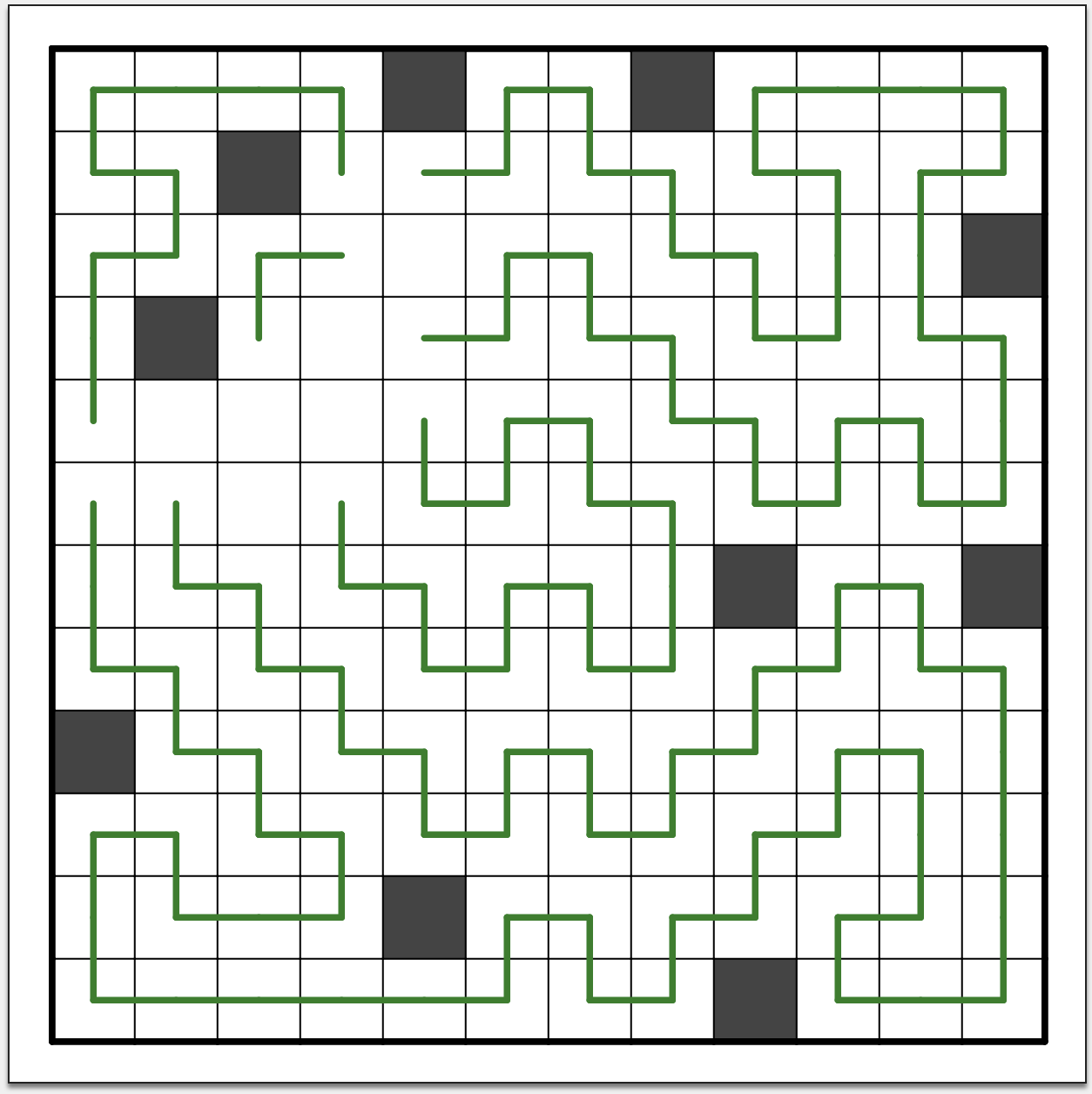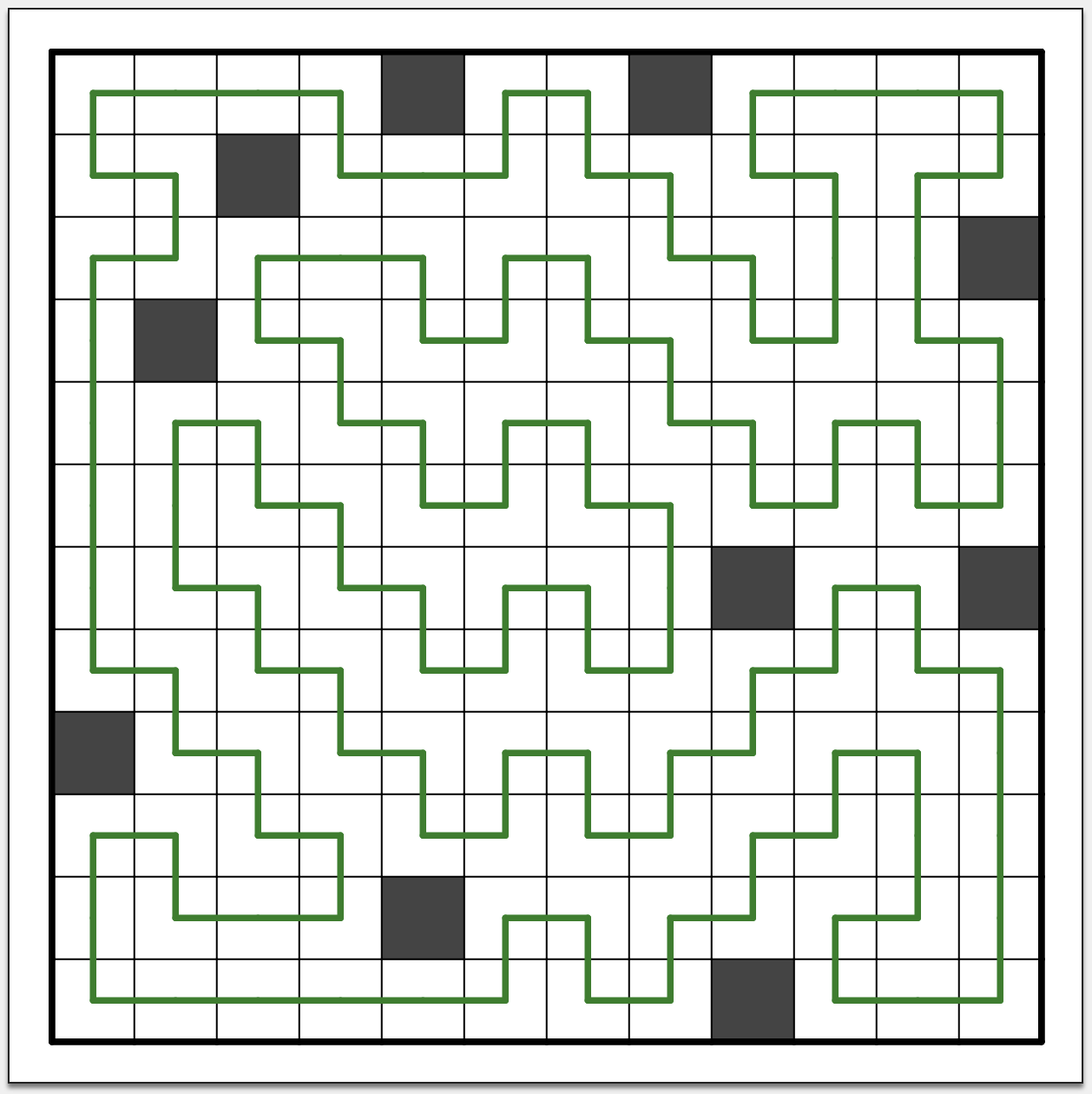Solution with a solve path (Solve it yourself on Penpa+)
Let's construct some rules to help us solve.
- Corner rule: in the following configuration, where
*denotes no connection and
B
X * A C
*
Y
then the cells ("in the corner") must be connected, so you can draw the two line segments B-A and A-C, giving
B
|
X * A - C
*
Y
Applying the corner rule and easy logic to the starting position gets us
(1)
The bottom left can only be resolved like this. Use the corner rule as well.
(2)
Invalid configuration rule: if there is a cell only reachable from one neighbour, then we have an invalid configuration.
Short loop avoidance rule: in the following configuration
B
X A C
*
Y
where X and C belong to the same short loop, we cannot have X-A and A-C. Therefore B-A is connected (to avoid triggering the invalid configuration rule). So
B
|
X A C
*
Y
Using this, we can make some deductions.
(3) (The red segment leads to a quick contradiction and must be removed)
(4)
Connecting the red line leads to a contradiction in the top right after around 10 moves (see the comments under the other answer for a more elegant method). So we have
(5)
Connecting the red line leads to a contradiction in the middle right after around 11 moves. So we have
(6)
Connecting some obvious things (starting from the bottom) leads to
(7)
Avoiding a big loop on the left leads to the solution
(8)








